The space between work and gaze? A fertile void in which something happens. Conversation with Minus.log
Minus.log is a collective formed, in 2013, by Giustino Di Gregorio and Manuela Cappucci. The research Giustino has been pursuing since the 1990s ranges from video art to musical experimentation, in which he stands out as a composer. In 1999, he released the album Sprut on John Zorn’s Tzadik Records. The 2000s are dedicated to the creation of several audiovisual installations, among which Trapped Light (E-fest Cultures Numériques, La Marsa, Tunisia). Manuela, on the other hand, began her artistic journey during her university years by taking free painting courses. In tune with her love for Eastern philosophy, she approaches minimal art. Her experimentation, starting in 2011, is enriched by also opening up to new means of expression. From the meeting of these sensibilities, Minus.log was born, a common space in which material and immaterial, analog and digital, and in which empty space and pause predominate. In Minus.log’s works emerges the constant search for a silent communication that seeks to touch deep chords through simple elements, be they shapes, lines, projections, sounds or hinted landscapes. He plays in the interstices of meaning and logic to bring to light what is often quickly set aside: error, expectation, repetition. In the making of his works, through the different means at his disposal, Minus.log explores a dimension in which it is possible to grasp nuances and minimal variations, but also a different perception of time and one’s inner space.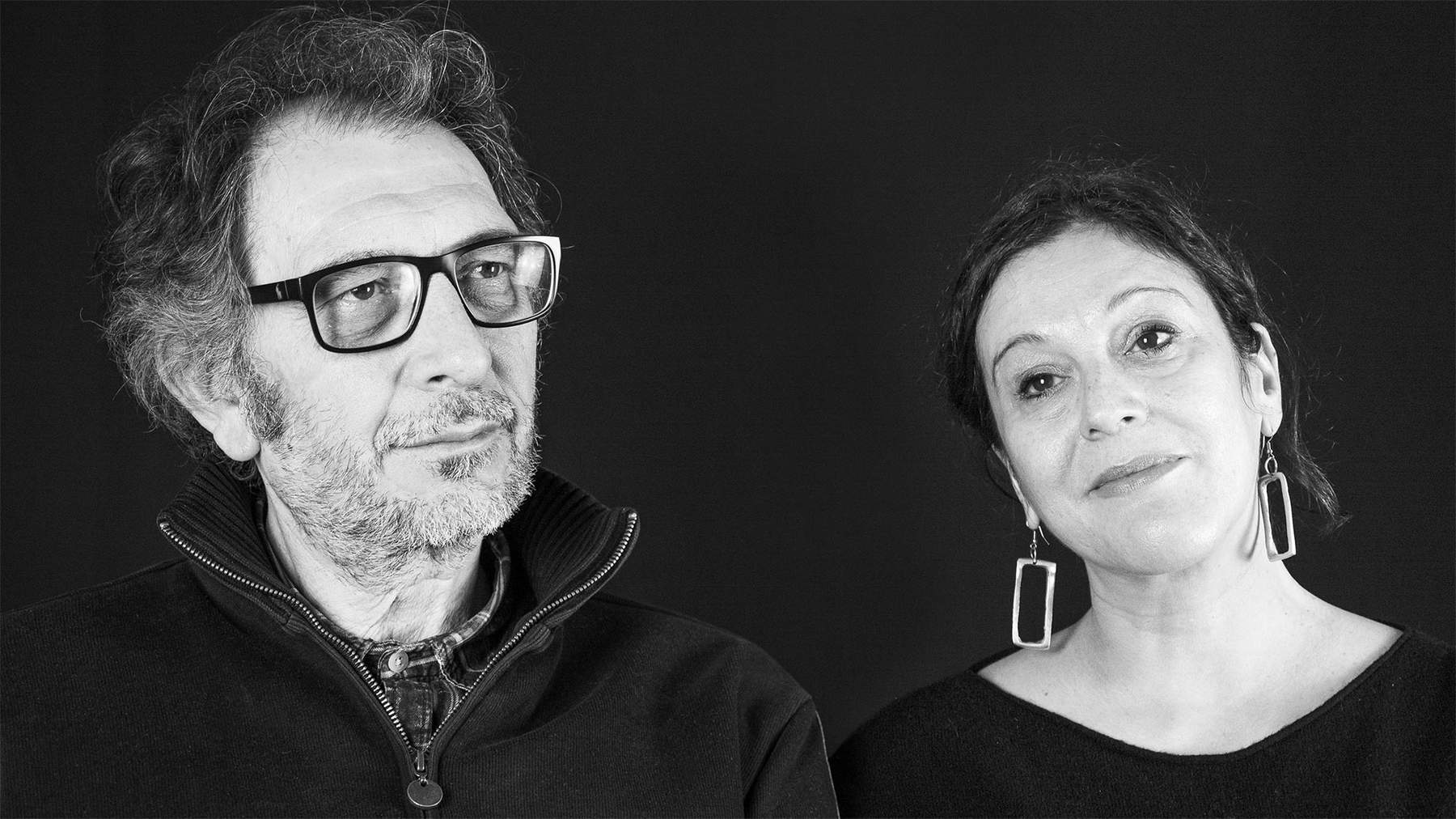
GL. Yours is an artistic duo: to start this dialogue, I would like to ask you about your pre-history... how and when did your interest in art arise? Usually childhood plays a strategic role in the initiation of this process. Tell me your stories individually.
GDG. From an early age I built for myself what I needed, what my head needed to travel, while staying here in a place that apparently offers little stimulation. My first love was cinema, but it wasn’t enough for me to watch movies, I wanted to make them myself and share them with the people around me. When I was fourteen, when almost all the kids in the group were trying to get mopeds, I asked my father for a camera and, with that, I started making short films involving my friends and the whole neighborhood. They called me “The Home Movie Guy,” and I was considered a weirdo, lost in his own world, disinterested in everything else: school, girls, motors. I always loved art in all its forms. In the 1990s I got into music: it was the time when people were exploring the possibilities of so-called “plagiarism” or “cut up,” basically creating new compositions using fragments of other musicians’ pieces. One of my pieces came into the hands of John Zorn, and he asked me to create a work for his record label. So, in 1999 the album Sprut came out on Tzadik Records. It was a very important turning point, the moment when I began to really believe that I could call myself an “artist.” For some time I devoted myself mainly to music, but I like to change direction often in search of new stimuli, so I also wanted to explore other things, from video art to audiovisual installations to painting.
MC. As a child I spent entire days with pencils and markers, losing track of time. Hours and hours immersed in a world that was created before my eyes, almost by itself. For me it was a mysterious game that could not hold a candle to any other activity. I cultivated this world throughout my adolescence, while attending a classical high school and, later, the Faculty of Letters and Philosophy in Urbino. I remember that every positive evaluation that reconfirmed me in the path, which I had embarked on for various reasons, was a relay. I carried with me a kind of sorrow for a lost paradise. But the turning point, which gave me the courage to somehow recover my paradise, came from the very university I was attending, from a philosophy teacher. Professor Leonardo Arena’s lectures were not just university lectures: they were living philosophy that, I don’t know how, ignited something that pushed me in my natural direction. I graduated with a thesis on Paul Klee, and it was like immersing myself in a spring of free creativity, beyond any superstructure. The so-called “second chance” was looming. Meanwhile, I had started taking painting classes. I was not so much interested in drawing, I was fascinated by gesture and color, each mark encompassing a world. I discovered, along the way, that technique (which I had to acquire and was so afraid of) feeds on the same mysterious game as always, inextricably linked to the creative act and enriched, day by day, with new stimuli and new means of expression.
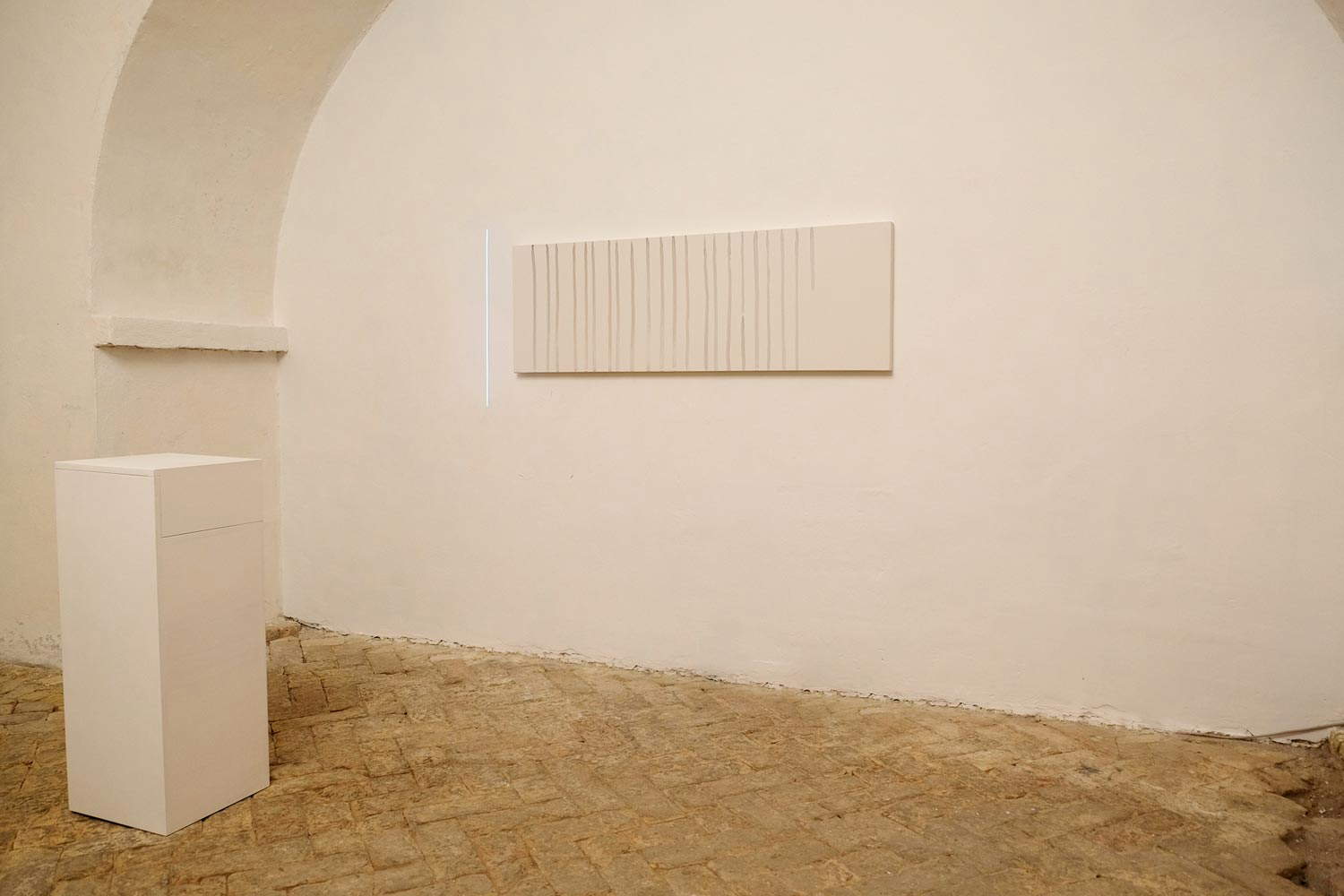


 Minus.log,
Minus.log,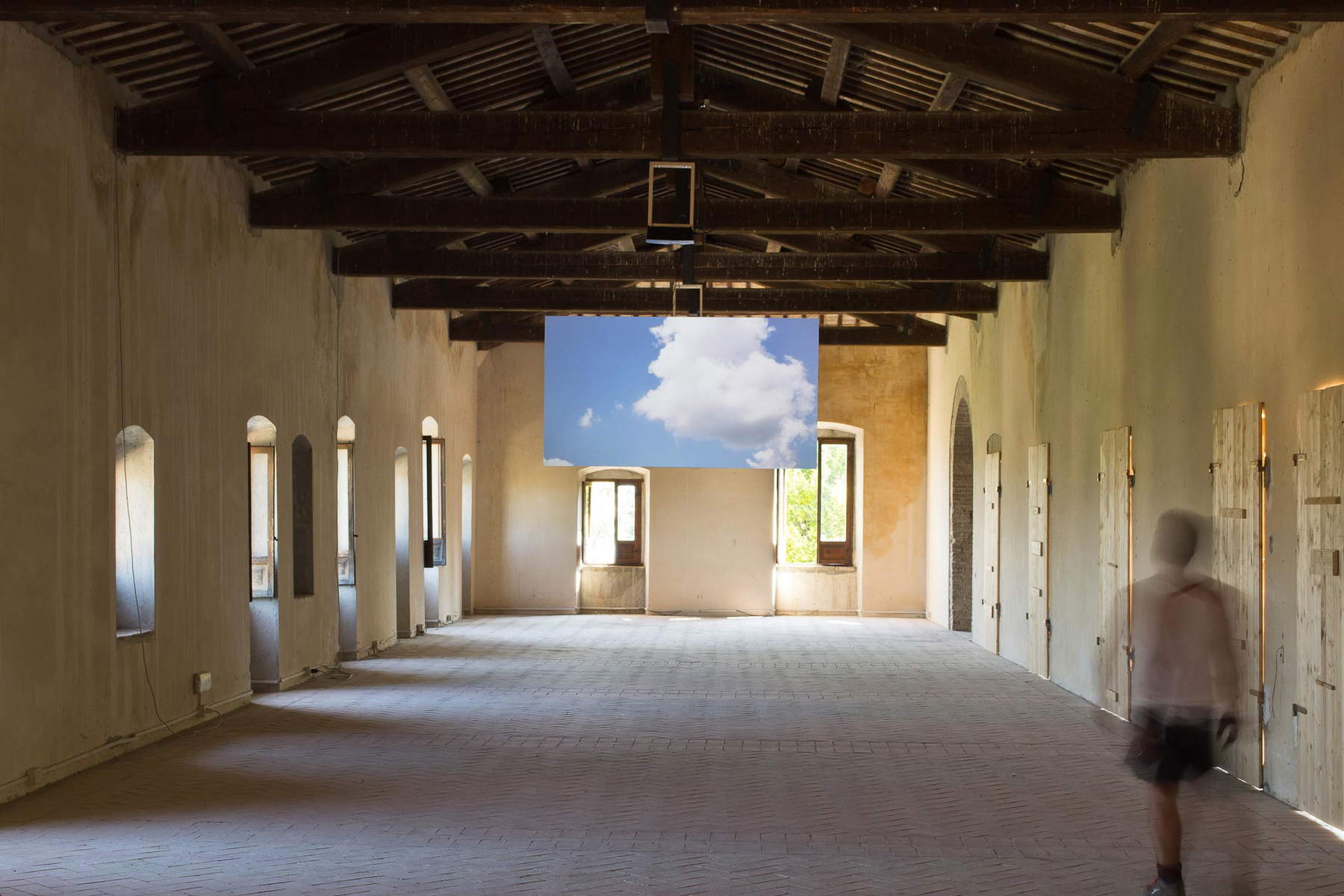

 Minus.log,
Minus.log,When and how did you meet?
We met in 2011, even though we live half an hour away by car. We started following each other online and wanting to learn more about each other’s work, so we invited each other to a couple of events we organized and got to talk live. Soon after that came the possibility of working, with other artist friends, on a site-specific audiovisual installation. In a couple of months, the time it took us to create Menhir (that was the name of the installation), we discovered a great attunement: somehow we were moving in the same creative world, without needing to talk much, and ideas emerged from this common space in a very natural way. A beautiful discovery.
Do you collaborate both on the conceptual/design level and on the operational level by physically realizing the work with four hands?
We don’t really see a distinction between the conceptual/design plane and the operational plane, perhaps because in our way of working there is no design phase that precedes an operational phase but there are discoveries, feedback, constant variations, and the two planes constantly intersect. Often it is the hands that do the thinking, whether they are holding a paintbrush, a computer or materials of various kinds. Behind this operative thinking is the world of Minus.log, a shared space beyond any possible conceptualization. All four of our hands draw from there. In that sense we operate with four hands. Concretely, though, and I think the question also refers to this, in the studio we take advantage of Manuela’s hands to use colors and Giustino’s hands to work with software or wood, but only because they are more trained.
G.L.: This idea of thinking hands fascinates me: I would like to ask you to talk more about it...
The hands tap into the Minus world unconsciously, in a more direct way. They do not select a priori, they do not calculate the gesture, they are free to explore and yet they move with a coherence of their own. Sometimes they surprise us. This depends on our approach to art, the one we have always had, even before we met, and which, together, has been strengthened. It is a state of mind in which we leave a lot of room for creative flow, for naturalness. The less we intervene to edit a work, the more interesting the work is in our eyes and not only that: we often find that it communicates better, more directly with others as well, as if it draws from a common matrix. Then, of course, it is not a rule and not all works are born this way: some works have had a long genesis and have been “filed” for a long time, but we are always interested in preserving their original freshness.
What is the value of light blue in your work?
It is a beautiful color to explore, evocative and natural. We have often found ourselves working with this color in its different shades; perhaps because it delicately emerges from the white space and traces the borderline moment between appearing and fading: an indeterminate boundary between image, perception, imagination. Light blue allows us to blur the boundary between the work and the viewer, to create a feedback game that makes the encounter dynamic.
Are you interested in the idea of slowness?
We are interested in natural time, that each work follows its own path without haste. Some works are born in a few hours, others take years before they reach their final form. The important thing is to respect their creative process without forcing their hand. But yes, in fact the idea of slowness often returns in the works: we are attracted to the small variations, the nuances, the imperceptible error. To make sure that those who enter the set up environment can grasp all this, we need slowness, we try to stimulate a different perception of time.

 Minus.
Minus.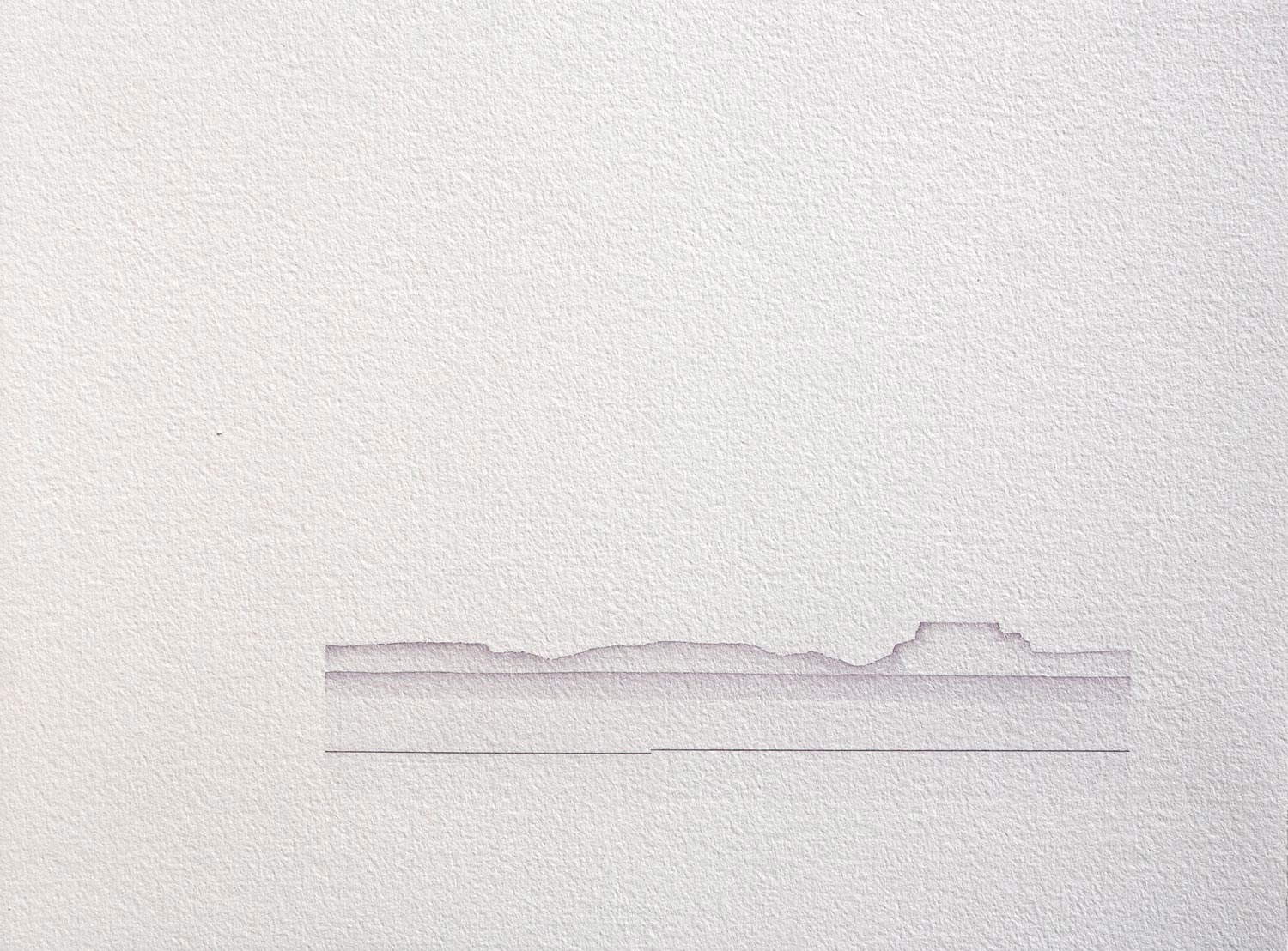 Minus.log, Nonplace
Minus.log, Nonplace
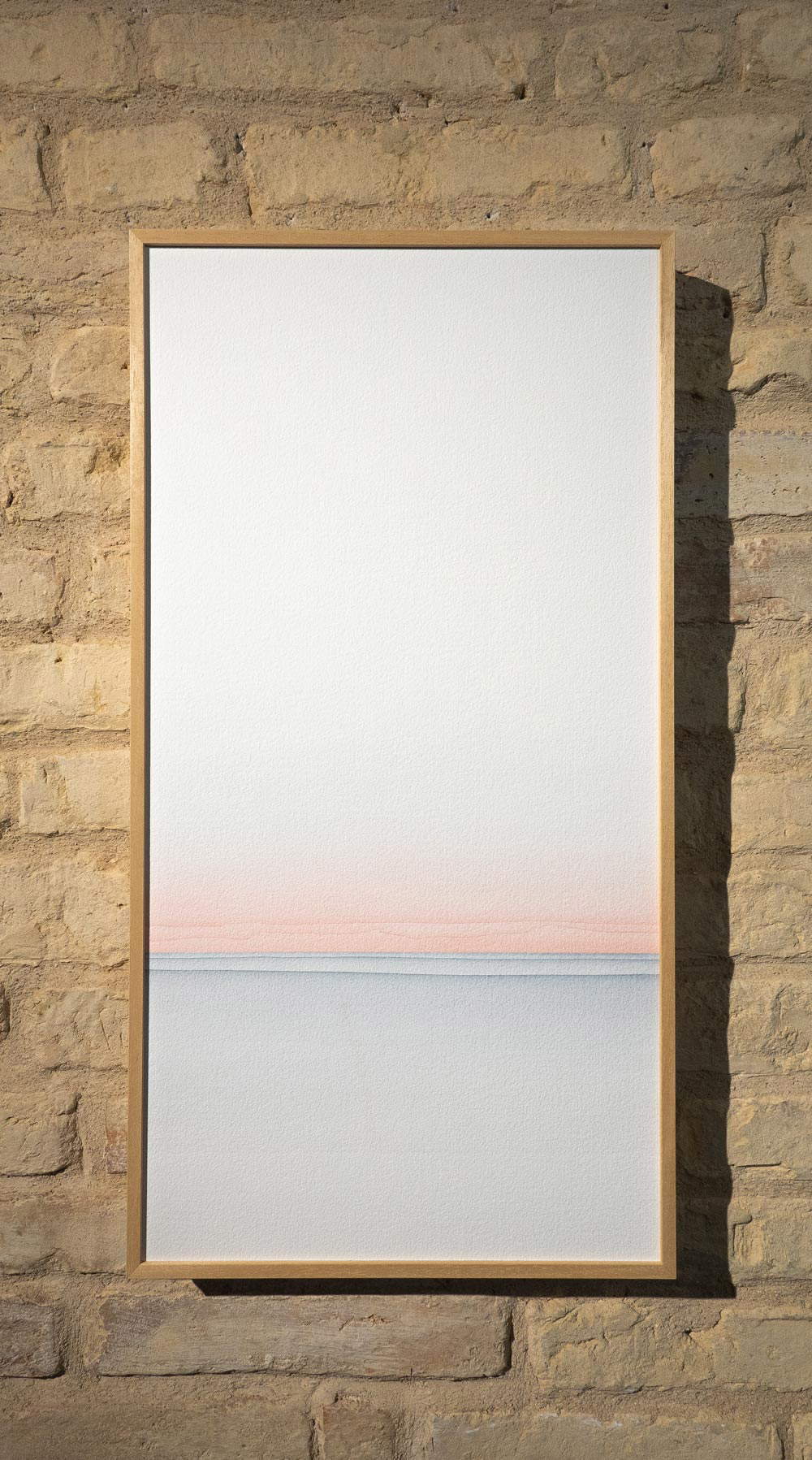 Minus.
Minus. Minus.log, Silent
Minus.log, Silent Minus.
Minus.Another element you often encounter is geometry, which, if I am not mistaken, “flirts” with poetry in your work?
We are fascinated by the search for an aesthetic balance between perfection and error, randomness and control. We use both hands and software, often in the same work. The result is what you said: work in which elements of nature, unfinished forms in transformation, “frolic” with digital cuts or geometric elements. It probably depends precisely on the fact that we work with different media that influence each other in a continuous cross-reference between video installation and painting.
Very often in your works recurs the image of the sky how come?
In the installations of the No-time series we find a sky, or rather, a portion of the sky captured with a digital cut. We started playing with photos of white clouds in a blue sky and, with the help of some software, recreated their slow and fluid movement. We liked what came out. It was aesthetically interesting, and there are often deep reasons why a discovery seems aesthetically interesting to us. It was something natural and digital, something simple but open to less immediate suggestions. What could be simpler than the sky we can look up at? But the rarefied, almost hypnotic atmosphere that arises from the installation allows for a journey. The movement of the clouds is seemingly natural, but the fluid slowness, every now and then, is suddenly interrupted, as if time has undergone a sudden acceleration that we have failed to grasp, and we find ourselves looking at the same sky at a different time or perhaps we are looking at another sky, in another place. Space, time, our perception, there are so many suggestions at play,yet it is a simple journey that allows everyone to find on the road what they want.
Are you interested in a contemplative dimension?
We are interested in a spiritual dimension, if you can call it that, which we try to trace in the everyday. Looking for a trace of what could be called “deeply human” is important in our art. The curious thing is that what is deeply human always seems to carry with it a trace that goes beyond it.
Does the sacred still have an importance for you in today’s art and in the world in which we live?
Perhaps it does, but we enter slippery ground and words can only evoke something indefinable. Then it is better to answer without giving definitions, only trying to trace the sacred in its intangible concreteness. Sacred is the space you protect and try to clean every day from the encrustations of expectations and conditioning; sacred is the fear of starting a new job; sacred are the waiting and the helplessness in waiting; sacred are the whiteness and the silence; sacred is the moment of discovery, the moment when you realize that your work does not belong to you.
But sacred above all is that empty space between the work and the gaze. Something mysterious and profound can really happen there.
“Sacred above all is that empty space between the work and the gaze,” so what do you think is the position in which the artist should place himself in relation to the work?
We like to place ourselves in a receptive position. Leave room for what happens, do as little as possible, observe the process, so the work can surprise you by going beyond what you had anticipated. In this way it is alive and transmits some of its creative power to the viewer. It has the power to touch deep chords in visitors to an exhibition but also in us who have contributed to its taking shape. The space between the work and the gaze is that fertile void in which something important can happen, the moment of silence between perception and interpretation.





How important in your work is the formal cleanliness and precision of the works you make?
It only matters as a consequence of the naturalness of the gesture and from the cleanliness of the creative process. We do not seek perfection: we are convinced that the product and the process are inseparable. Formal cleanliness constructed at a desk does not interest us because it does not surprise us, it does not communicate. The best works, for us, are those in which you can trace the cleanliness and naturalness with which they were born.
Can it make sense to talk about landscapes in your work?
Yes, we often find more or less recognizable elements of nature in our works, sometimes reduced to essential, almost archetypal forms. From our studio we see olive trees, the countryside, hills and mountains in the distance. It has happened more than once that our guests have asked us, “But how do you make contemporary art here?” as if the “spirit of time,” with the means we have today, was present in one place rather than another. Perhaps the answer also lies in what remains of the landscape, of what we have around us and filter daily without even realizing it.
Which artists do you look to with particular interest?
There are many, we’ll tell you the first names that come to mind: Brian Eno, David Lynch, Agnes Martin, Paul Klee. So different, but they seem to us to be united by a quest that fishes “in deep water,” as Lynch would say. They seem to indulge in the creative flow and, precisely because the process and the product feed on the same energy, they manage to transmit this creativity to others. Think of David Lynch’s way of working: many scenes are born on the set, without a script; he empathically interacts with the actors and leaves room for what happens. Brian Eno’s creative universe also draws on a simplicity, a respect for his surroundings that excludes any barrier between the person making art, the place that welcomes it, and the person who enjoys it. Superstructures crumble, a strange form of simplicity emerges that preserves mystery, and you are welcomed within this world, you yourself are part of this world. Klee’s work is a hymn to freedom that pushes you to search for your own creative universe. A master who with little means, with naturalness, creates his world, urges you to try to do the same and set out on your own, and in this view, there is no risk of emulation. Agnes Martin’s universe then is immense, we are still trying to grasp it, and yet it is disarmingly simple. Here, all these names have in common an apparent simplicity that breaks down barriers and makes you travel, and the list would still be long. Two more names: Miles Davis and Jimi Hendrix!
Warning: the translation into English of the original Italian article was created using automatic tools. We undertake to review all articles, but we do not guarantee the total absence of inaccuracies in the translation due to the program. You can find the original by clicking on the ITA button. If you find any mistake,please contact us.



























